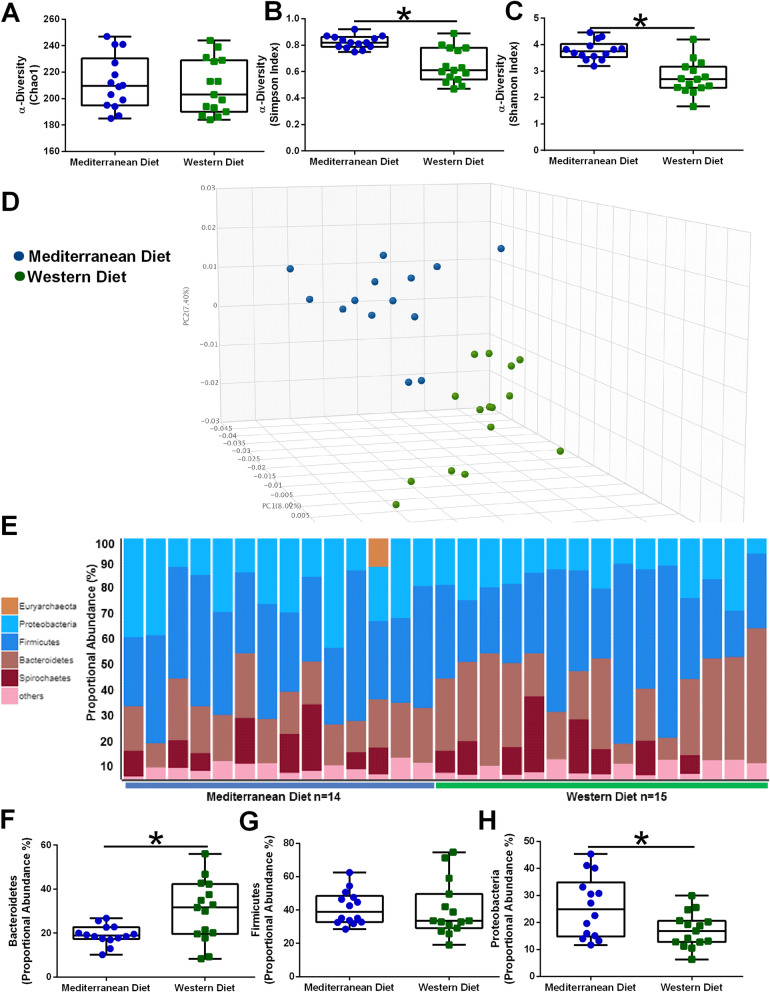Fig. 1.
Diet is a driver of gut microbiome diversity. Alpha diversity was estimated with the Chao1 index (a), Simpson index (b), and Shannon index (c) on raw OTU abundance in Mediterranean diet and Western diet-fed subjects. d Principal coordinates analysis (PCoA) of bacterial beta diversity based on the Bray-Curtis dissimilarity of gut microbial populations by relative abundance indicates that subjects separate by dietary pattern consumption. Mediterranean diet-fed subjects are shown in blue, while Western diet-consuming animals are shown in green. e Relative abundance of bacterial phyla in different fecal samples is visualized by bar plots. Each bar represents a subject and each colored box a bacterial phylum. The height of a color box represents the relative abundance of that organism within the sample. “Other” represents lower abundance taxa. f Western diet-fed NHPs displayed higher Bacteroidetes. g Diet had no significant effects on shifting Firmicute abundance. h Mediterranean diet-fed subjects showed higher proportional abundance of Proteobacteria. n=14-15; *p<0.05. Error bars in box plots show the min to max distribution

